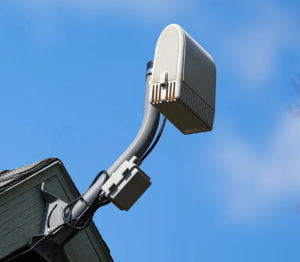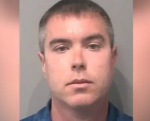
Source: Mirror Indy
Story by Emily Hopkins
INDIANAPOLIS–Clif Marsiglio has always been a bit skeptical about gunshot detection technology coming to his neighborhood.
Over the course of three months in 2022, Indianapolis tested the technology on the city’s east side. Now, more than a year after the pilot’s conclusion, many of the sensors are still in place. That has Marsiglio concerned: What kind of information could be collected without the community knowing, and how is it being used?
“If they have not taken these systems down, there is no reason for them not to keep collecting data,” said Marsiglio, an eastside resident and executive director of the Near East Side Community Organization.
Last week, Wired Magazine revealed for the first time the location of thousands of ShotSpotter sensors around the world.
Data from the report shows the location of 69 sensors across the east side. Mirror Indy visited several of the locations and found the sensors remained in place.
When a gun is fired near the sensors, the devices transmit data to a ShotSpotter review center for a quick audit, at which point the information might be passed along to law enforcement, according to the company’s marketing materials.
It’s unclear whether the sensors are still recording or transmitting data to SoundThinking, the company behind ShotSpotter’s sensors. The company declined to answer Mirror Indy’s questions about why the microphone sensors are still there and whether they are currently recording information.
“Every ShotSpotter deployment is unique. In Indianapolis, we are participating in a formal proposal process and cannot comment further,” a company spokesperson said in a statement.
The company also alleged that whoever disclosed the locations to Wired did so illegally, and the company plans to pursue legal remedies.
“Due to this ongoing litigation, we cannot comment specifically on the leaked data,” read the emailed statement, in part.
Officer William Young, an Indianapolis Metropolitan Police Department spokesman, referred questions about the sensors to the companies that own them.
“Any gunshot detection sensors that were installed during the pilot program are the responsibility of the company. IMPD does not have access to those sensors,” Young said in an email.
Chris Daley, executive director of American Civil Liberties Union of Indiana, said that when the pilot was announced, his organization raised concerns about privacy and racial disparities, and urged IMPD to report data about the use and deployment of such technologies.
“Now, it is unclear whether or not a private company has been left with access to surveillance in Indianapolis neighborhoods, without citizens knowledge or permission, raising significant privacy concerns,” he said in an emailed statement.
IMPD has previously said data from the sensors was provided to IUPUI researchers to determine its efficacy. The police agency has not otherwise shared information about use of the technology.
Criticisms and questions on gunshot detection technology
Two other companies installed sensors in 2022.
J&M Security Solutions CEO Jason Nagy confirmed that his company’s technology was removed after the pilot ended.
A spokeswoman for the other company, Flock Security, said Flock currently does not have “operational gunshot detection devices in Indianapolis,” but she did not respond to questions about whether the company’s sensors had been left in place.
This is the first time the exact locations of the ShotSpotter devices have been known, even to IMPD. Young said the agency “was aware of the general area where sensors were installed” but confirmed that officials had not known the sensors’ exact locations.
According to the Wired article, SoundThinking keeps the locations of its sensors closely guarded, going so far as to resist subpoenas for the information in court. Tom Chittum, senior vice president of forensic services at SoundThinking, told Wired that the company wants to protect people who cooperate with SoundThinking as well as to protect its equipment from vandalism.
The company’s technology has long been the target of criticism from activists and researchers who have said the technology is expensive, ineffective and disproportionately placed in low-income communities of color.
The magazine’s analysis found that, in aggregate, 70% of people living in a neighborhood with at least one SoundThinking sensor identified as either Black or Latino. Chittum told Wired that his company’s sensor deployment “is not informed by race.” A SoundThinking spokesperson said in a statement that sensors are deployed based on historical gunfire and homicide data.
Future of program uncertain
The future of gunshot technology in Indianapolis remains up in the air. The city has yet to release any findings from the pilot period that concluded in December 2022, and IMPD’s Young said “the evaluation of whether or not gunshot detection technology system is right for Indianapolis is still ongoing.”
IMPD Chief Chris Bailey told reporters this month that the results of the pilot program were “mixed” and “very expensive.”
A 2021 study of ShotSpotter deployments in Chicago by the MacArthur Justice Center found that 89% of ShotSpotter reports did not lead police to a gun-related crime. Earlier this month, Chicago Mayor Brendan Johnson announced the city would not renew its contract with SoundThinking.
It’s unclear what such a system would cost Indianapolis. Previous reports indicated it would cost an initial $250,000 plus $200,000 in annual maintenance to cover a 3-square-mile area.
Marsiglio, the eastside resident, said he’s not opposed to the technology, especially if it would help first responders quickly find and administer aid to a victim.
But he’d like to see more information and transparency about the use of gunshot detection systems by Indianapolis, now and in the future. And he wonders if some of the money that would be spent on such a system would be better used to address underlying issues in the same areas.
“Over in the areas where we have the most shootings, we also have the most homelessness and (highest) rates of addiction,” he said. “We could be using that money to help these people find a better life.”












